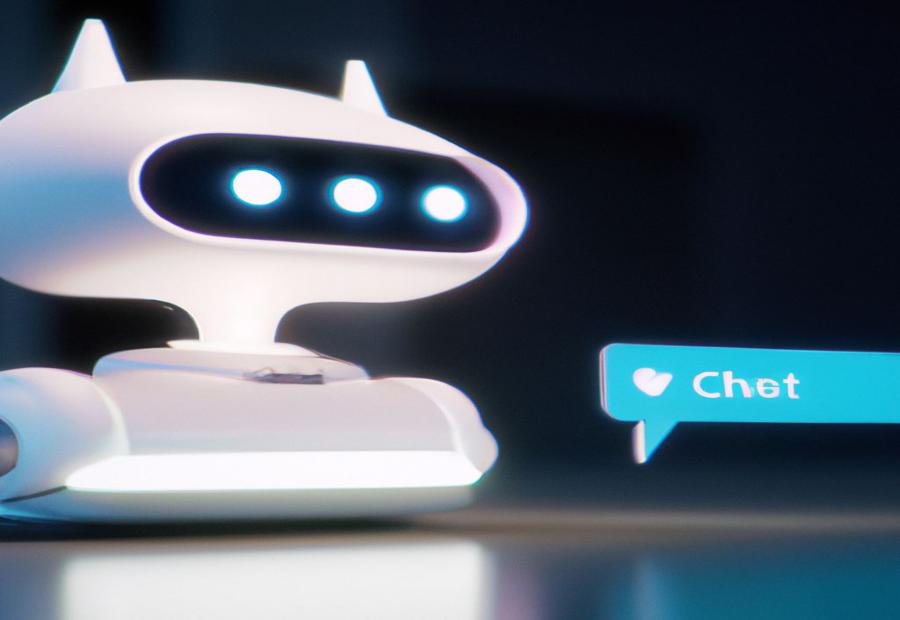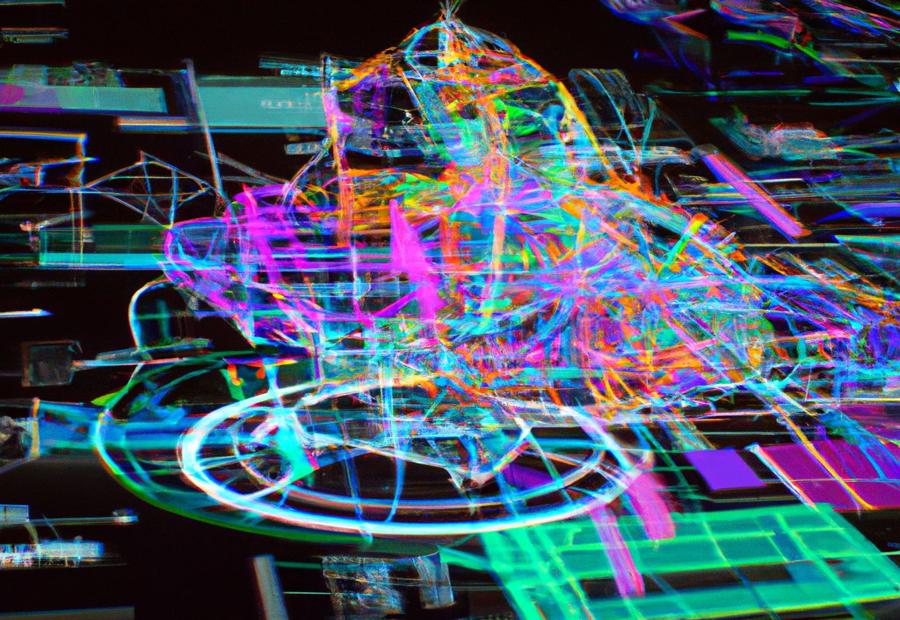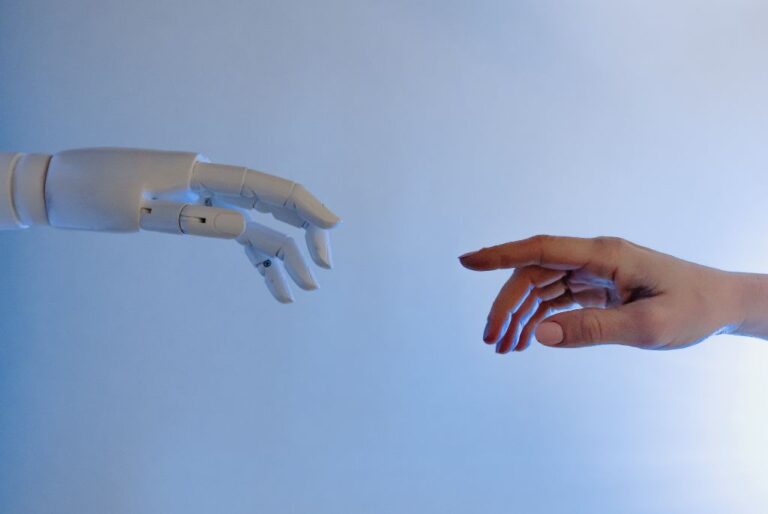Exploring Different Types of AI Chatbot Architectures
Key takeaway:
- Choosing the right chatbot architecture is essential for the success of an AI chatbot. Factors such as scalability, complexity, and natural language processing capabilities should be considered.
- Common types of AI chatbot architectures include retrieval-based, rule-based, generative, and hybrid architectures. Each has its own advantages and limitations.
- Building an AI chatbot involves understanding intent-based architecture, designing a multi-layered system, and integrating APIs for an expandable knowledge database.
When it comes to AI chatbot architectures, understanding their importance and the factors to consider is key. In this section, we will dive into the world of AI chatbot architectures and explore why they play a crucial role in creating effective chatbot systems. Additionally, we will highlight the key factors that one must consider when choosing the right chatbot architecture. So, let’s uncover the foundation of chatbot intelligence and design for seamless user experiences.
Importance of Chatbot Architecture
The significance of chatbot architecture is immeasurable. It has a decisive role in a chatbot’s functioning and performance. The architecture decides how the chatbot grasps and answers user questions. A well-thought-out architecture guarantees effortless communication between the user and the system, leading to better user experience and pleasure.
There are numerous explanations why an effective chatbot architecture is important. Firstly, it facilitates intent-based processing, making it possible for the chatbot to recognize user needs accurately. Techniques like natural language processing (NLP) and machine learning algorithms are utilized for this. Secondly, a well-designed architecture makes it possible for the chatbot to manage complex dialogues by introducing dialog management capabilities, guaranteeing smooth conversation flow. Lastly, a strong architecture facilitates integration with external APIs, granting the chatbot access to comprehensive knowledge databases for precise responses.
To build an AI chatbot with the right architecture, understanding intent-based processing is critical. This includes designing a multi-layered system that can handle different levels of intent recognition and response generation. Furthermore, integrating APIs for extensive knowledge databases boosts the chatbot’s capacity to give pertinent and up-to-date information.
Dialog management is hidden beneath chatbot architecture. It supervises how conversations are managed and kept within the system. Rule-based responses give pre-defined answers based on particular conditions or patterns sensed in user queries. Simultaneously, response generation methods determine how dynamic responses are created using machine learning algorithms or other techniques.
Language use is also significant in chatbot architecture. NLP techniques enable better comprehension of subtle language elements such as slang or colloquialisms, improving the entire conversation quality.
For business owners, investing in AI chatbot architectures offers several advantages. AI technology provides various use cases such as customer support automation or virtual assistance services. Improved relevancy in chatbot replies boosts customer engagement and satisfaction. Additionally, chatbot analytics and monitoring features allow businesses to track performance metrics and make data-driven enhancements.
Choosing the right chatbot architecture is like finding the perfect partner – it needs compatibility, adaptability, and a sound comprehension of your needs.
Factors to Consider When Choosing Chatbot Architecture
When selecting a chatbot architecture, consider several factors:
- Understand the scope and purpose of the chatbot. Identify the tasks and goals the chatbot should achieve. This helps pick the right architecture that matches these objectives.
- Analyze interaction complexity. Different architectures can handle various levels of complexity. Think about dialogue flow, data handling, and integrations with external systems. Do this to determine which architecture fits the project.
- Scalability and flexibility are important too. The architecture should scale for future growth and adapt to business needs. It should allow for easy integration with new features, APIs, or knowledge databases.
- Natural Language Processing (NLP) is critical. Evaluate NLP capabilities in each architecture. Analyze how they understand and respond to user queries. This helps make an informed decision.
- Maintenance and updates count too. Look at ease of maintenance and updates. Consider developer accessibility, support resources, and vendor updates.
- Cost is essential. Assess the cost involved in implementing and maintaining different architectures. Consider initial development expenses, hosting costs, licensing fees, and customization requirements.
- Also consider performance efficiency, security measures, available development tools/frameworks, industry standards (e.g. GDPR compliance), and compatibility with existing infrastructure.
- Understand the unique requirements of the business or project. Consider all factors, like scope, complexity, scalability, NLP capabilities, maintenance needs, cost-effectiveness, etc. This helps make an optimal choice that aligns with current and long-term objectives.
For example, a company wanting to implement a customer support chatbot should focus on architectures that excel in understanding complex queries and providing prompt, accurate responses. Analyze available options based on scalability, maintenance needs, and cost. This selects an architecture that ensures a seamless customer service experience without overburdening resources.
XYZ Corporation boosted customer engagement with a chatbot. After researching and analyzing various architectures, they chose a hybrid architecture combining the strengths of retrieval-based and rule-based approaches. This improved the chatbot’s ability to understand user intents and provide relevant contextual responses. It also increased customer satisfaction levels significantly.
Common Types of AI Chatbot Architectures
Discover the common types of AI chatbot architectures that are shaping the world of conversational AI. From retrieval-based and rule-based architectures to generative and hybrid architectures, we’ll explore the unique characteristics and functionalities of each. Get ready to dive into the fascinating world of AI chatbot technologies and learn how these different architectures are revolutionizing the way we interact with virtual assistants.
Retrieval Based Architecture
Retrieval based architecture is an AI chatbot type. It relies on pre-defined responses stored in a knowledge database. The chatbot matches user input to the closest response and delivers it. This makes it appear like it understands and forms human-like conversation.
Keyword matching, semantic analysis, and machine learning algorithms are used to identify the most suitable response. The chatbot analyses the user’s input to find key words and phrases. Then, it retrieves the associated response. This gives accurate and contextually suitable answers.
APIs can expand the knowledge database. By connecting to external sources such as FAQs or product databases, the chatbot can access up-to-date information to answer queries better.
This architecture is good at handling frequently asked questions. The predefined responses ensure that users get accurate and consistent information. Complex or unique queries may be a challenge though.
Retrieval-based architecture is valuable in creating AI chatbots that deliver immediate and relevant responses. By leveraging knowledge databases and implementing intelligent matching algorithms, these chatbots can offer enhanced customer support while reducing manual effort for businesses.
Rule Based Architecture
Rule-based architecture is an AI chatbot architecture with predefined rules and conditions. It works by creating a rule base. This is a collection of scenarios and user queries. Responses are generated when patterns and conditions match. This type of architecture is structured and predictable. It’s simpler to update and maintain due to its rules. But, it has limits with complex or ambiguous queries.
When using rule-based architecture for chatbots, consider the complexity of user interactions. Evaluate if the rule-based approach can handle queries. Keep updating and refining the rule base for accurate responses.
Generative Architecture
Generative architecture is a popular type of AI chatbot. It creates responses from nothing, instead of drawing on pre-defined answers or a knowledge base. It uses machine learning algorithms and natural language processing to interpret user input and produce pertinent replies, based on context.
This AI learns from conversations in its data set. It can respond to complex queries and interact with users in a personal way. Generative architecture is great for when there isn’t a set of responses available or creativity is needed.
Components of generative architecture:
- Machine Learning Model: Learns patterns and context, to generate replies, from a large data set of conversations.
- Natural Language Processing: Helps recognize intent and entities in user input, to build accurate responses.
- Contextual Understanding: Analyzes current input and past messages, to produce relevant and sensible replies.
Generative chatbots can come up with inventive answers, but they may also make mistakes or provide nonsensical output. The quality of the results depends on the training data and the chatbot needs ongoing feedback and improvement.
The Hybrid Architecture brings together the benefits of both worlds – it takes chatbots to a whole new level!
Hybrid Architecture
A hybrid architecture fuses two approaches. It takes advantage of both retrieval-based and generative architectures. Retrieval-based systems are great for giving answers that match user queries with a knowledge base. While generative systems make unique responses with learned patterns.
The hybrid architecture starts by trying to get an answer from its knowledge base. If it doesn’t find one, it switches to the generative approach. This is where it generates a response with machine learning techniques. This way, the chatbot can handle a wide range of user queries and give relevant answers.
For instance, an online marketplace customer service chatbot. It can easily get product availability or shipping details from its knowledge base. But, when asked for advice or idle chat, the bot gives personalized answers based on what it has learned.
Hybrid architecture is ideal for businesses that want AI-powered chatbots that can hold complex conversations. It gives chatbots the ability to give intelligent responses that meet user needs. By combining retrieval-based and generative approaches, hybrid architecture ensures that chatbots provide engaging interactions.
Steps to Build an AI Chatbot with the Right Architecture

Photo Credits: Artificialintelligencechatbot.Ai by Vincent Thomas
To build an AI chatbot with the right architecture, we need to follow a sequence of steps. First, we’ll dive into understanding intent-based architecture. Then, we’ll explore designing a multi-layered system. Finally, we’ll consider integration APIs for an expandable knowledge database. By following these steps, we can ensure that our AI chatbot is equipped with the most suitable architecture for effective and efficient communication.
Understanding Intent Based Architecture
Intent Based Architecture is a key part of AI Chatbot development. It’s about working out the goals or aims behind user questions to give exact and relevant replies. Through Natural Language Processing (NLP) techniques, the aim of the user can be discovered, allowing the chatbot to come up with suitable answers. This architecture concentrates on working out the meaning and condition of user messages, allowing effective conversation between humans and chatbots.
In this type of architecture, it’s about understanding user intent instead of just depending on predefined rules or patterns. By using machine learning algorithms, intent-based chatbots can keep learning and increasing their capacity to comprehend and react to user questions correctly. They make use of NLP models to identify patterns in information and make assumptions based on these patterns. This lets them correctly identify different intents expressed by users, for instance asking for information or making a booking.
One great thing about Intent Based Architecture is its adaptability. The chatbot can understand from new data and adjust its answers accordingly. This suppleness allows businesses to easily update and increase their knowledge base as new info becomes available or customer tastes change over time. With an intent-based approach, businesses can make chatbots that are able to manage a wide variety of customer inquiries while giving exact and personalized answers.
Now that we have seen the importance of Intent Based Architecture, it’s exciting to explore its historical value in the field of AI Chatbot development. This architecture marks a move towards more intelligent and dynamic conversational agents that focus on capturing user intent instead of being controlled by predetermined rulesets or inflexible response generation techniques. The usage of this architecture has improved the quality and importance of chatbot conversations, making user satisfaction better and helping business outcomes. As technology continues to develop, so will Intent Based Architectures, allowing for even more advanced AI Chatbot systems in the future.
Designing a Multi-Layered System
Designing a Multi-Layered System? Consider these steps:
- Intent Based Architecture: First, understand user queries and categorise them. This helps route queries to the relevant layer.
- Layered Design: Divide the system into layers, such as NLU, Dialog Management, and Response Generation. Each layer focusses on specific tasks and works with others.
- Integration APIs: Integrate APIs to expand the knowledge database of the chatbot. This gives it access to external resources, providing more comprehensive information to users.
- Expandable Knowledge Database: Design the knowledge database to be easily updatable so it can adjust to changing requirements and user needs.
Designing a Multi-Layered System involves collaboration between layers. By properly designing each layer and integrating them, chatbots can understand intents, manage dialogs, generate responses, and use natural language.
Pro Tip: Regularly analyse user interaction data and fine-tune the architecture. This iterative process helps improve the chatbot’s performance and user satisfaction.
Integration APIs for Expandable Knowledge Database
Integration APIs are key for seamlessly integrating an expandable knowledge database into an AI chatbot. These APIs give the necessary tools and features to link the chatbot system with external knowledge sources. So, the chatbot can access and get data when needed. By using integration APIs, chatbot makers can ensure their AI chatbots have a huge pool of knowledge, improving their ability to give accurate and up-to-date replies to user queries.
Check out this table for Integration APIs for Expandable Knowledge Database:
| Integration APIs for Expandable Knowledge Database |
|---|
| – Seamless integration with external knowledge sources |
| – On-demand access and retrieval of information |
| – Enhanced accuracy and relevance of chatbot responses |
| – Expanding knowledge base without significant technical challenges |
Integration APIs don’t just enable the integration of external databases but also make real-time updates possible. This means that the chatbot’s knowledge base is always dynamic and up-to-date. These APIs also establish secure connections between the chatbot platform and various knowledge sources. The chatbot can do efficient data retrieval during conversations, supplying users with essential and useful information.
Different AI chatbot architectures may need specific integration API approaches based on their individual needs. For instance, a retrieval-based architecture might depend mostly on API calls to get pre-defined answers from an external database. On the other hand, generative architectures may use API functions to get text generation models or language processing algorithms. It is important to know these nuances when implementing integration APIs for a particular chatbot architecture.
Fact: Integration APIs not just provide connectivity options but also give security measures to protect sensitive data (Source: Reference Data).
It’s time to delve into the inner workings of chatbot architecture, where dialog management, rule-based responses, response generation, and language use take center stage.
Behind the Scenes of Chatbot Architecture

Photo Credits: Artificialintelligencechatbot.Ai by Keith Martin
Delve into the fascinating world of chatbot architecture as we explore the behind-the-scenes of creating AI chatbots. Discover the secrets of dialog management and rule-based responses, with a glimpse into the cutting-edge response generation methods utilized. Uncover the intricate language use within chatbot architecture that allows these virtual assistants to communicate effectively. Join us as we unravel the mysteries that power the seamless interactions between humans and AI chatbots.
Dialog Management
Dialog Management is essential for smooth communication. It manages user inquiries and maintains context. Techniques like intent recognition, context tracking, slot filling, and response generation are used. Chatbots use algorithms to decide the most relevant response depending on the dialogue state and user input.
Dialog Management also involves incorporating user preferences, personalization and conversational strategies to make realistic interactions. It enables chatbots to give precise information and adapt to different user styles and preferences.
Thus, Dialog Management helps create a great user experience. It lets chatbots manage complex conversations with multiple turns, maintain continuity and deliver nuanced responses. Advanced NLP models and algorithms are used to understand user intents better and generate suitable responses, making for a seamless user-chatbot interaction.
Rule Based Response
This type of architecture, known as a rule-based response architecture, is great for efficiently handling frequently asked questions or commonly occurring scenarios.
But, it may not be suitable for complex or unique queries. For these, other architectures such as generative or hybrid may be better.
A good response generation method is like a magician’s trick! Rule-based response architecture can help create this level of performance and accuracy.
Advantages:
- Easy to implement and maintain
- High level of control over responses
- Faster response time
Disadvantages:
- Limited flexibility in handling complex queries
- Lack of contextual understanding
- Inability to handle new or unknown queries
Response Generation Method
The response generation method in AI chatbot architectures is all about generating suitable and pertinent replies based on user input. To make sure the chatbot can communicate meaningfully with users and give them helpful information, certain steps must be taken.
These include:
- Getting the context: The chatbot needs to analyze the user’s query and understand the context in which it was asked. This employs natural language processing techniques to extract related info.
- Creating candidate responses: Once the context is identified, the chatbot makes multiple potential responses. These are based on pre-defined templates, rules, or patterns.
- Assessing response options: The chatbot evaluates each candidate response using metrics such as relevance, accuracy, and coherence. This helps pick the most fitting response.
- Enhancing response quality: Chatbots usually use machine learning algorithms to learn from user interactions. By taking feedback and regularly updating their models, chatbots can refine the quality of their generated responses over time.
- Personalizing responses: Effective chatbots modify their responses based on user likes or past interactions. This personalization boosts user satisfaction and engagement.
- Figuring out response confidence: Chatbots can assign a confidence score to each generated response, showing how sure they are in its accuracy. This helps them deal with vague queries more efficiently by offering relevant alternatives or seeking clarification from the user.
Moreover, for AI chatbot architectures to be successful, they must prioritize real-time interaction and perfect integration with existing systems. By ensuring timely and precise response generation, chatbots can improve user experiences and offer valuable support across a range of industries and domains.
Language Use in Chatbot Architecture
For Language Use in Chatbot Architecture, dialog management is crucial. It tracks user inputs, handles context change and organizes turn-taking strategies. Rule-based response generation depends on predefined rules or decision trees to find relevant responses for user inputs. The response method of the chatbot depends on its architecture. It could be template-based, with predefined templates filled with info, or more advanced, like deep learning models.
To use Language in Chatbot Architecture properly, the chatbot’s training data must include various language patterns and expressions used by users. Sentiment analysis helps the chatbot recognize and answer appropriately to feelings. Businesses can enhance their chatbot’s understanding and response in multiple languages by developing and expanding the knowledge database with APIs.
AI Chatbot Architectures for Business Owners

Photo Credits: Artificialintelligencechatbot.Ai by Thomas Brown
AI Chatbot Architectures for Business Owners: Delve into the capabilities of AI technology, discover how it enhances the relevance of chatbot responses, and explore the importance of chatbot analytics and monitoring in this section. Unleash the potential of AI chatbot architectures and their numerous uses for businesses.
AI Technology and its Numerous Uses
AI tech is shaking up the way businesses interact with customers. It brings new possibilities for customer service, tailored advice, automated processes, and efficiency. AI natural language processing and machine learning allow chatbots to understand and answer user requests.
AI algorithms improve relevance of chatbot answers. They analyze user inputs and provide accurate info and solutions – making the user experience better. Chatbots also learn from past interactions and adjust future ones.
AI helps to monitor chatbot performance and user behavior. Businesses use AI-driven analytics to spot areas for improvement and measure customer support success. This data-driven approach helps businesses make wise decisions and optimize chatbot strategies for improved customer experiences.
In short, AI tech and its applications in chatbots are changing how customers and businesses connect. AI algorithms help chatbots give smarter responses, learn from the past, and provide businesses with valuable data-driven insights. It all leads to more efficient and satisfying customer experiences.
Improved Relevancy in Chatbot Responses
Relevancy in chatbot responses is paramount to boost user experience and guarantee effective communication. Businesses can teach their bots to give more precise and context-suited replies to user queries through advanced AI chatbot architectures, which integrate Natural Language Processing (NLP) techniques such as intent recognition and entity extraction.
Chatbots can further improve relevancy through machine learning algorithms. This allows them to comprehend user preferences, recognize patterns in questions, and customize answers to individual needs. Also, utilizing data from prior conversations and joining external knowledge databases can enhance the chatbot’s capability to furnish pertinent info rapidly.
By paying attention to enhancing relevancy in chatbot responses, businesses can guarantee that users get accurate and tailored info, enhancing customer satisfaction. Moreover, pertinent replies help build trust among users and chatbots, inspiring continued involvement and escalating business growth.
To attain improved relevancy in chatbot responses, businesses need to invest in robust dialog management systems. These systems enable smooth conversation flow by handling context and keeping a coherent dialogue with users. Rule-based response generation methods can also contribute to relevancy by providing predetermined rules for generating suitable responses based on specific scenarios or keywords.
Furthermore, utilizing sophisticated language models in the chatbot architecture can let the bot generate more natural-sounding responses that match human-like conversation patterns. The integration of sentiment analysis algorithms can also help in interpreting user emotions expressed in their questions, allowing for personalized and compassionate answers.
Chatbot Analytics and Monitoring
Analyzing and monitoring your business’s chatbot use is crucial for optimization. Gather insights to identify areas for improvement and make necessary adjustments.
Chatbot analytics provide insight into user behavior, preferences, and satisfaction. It helps businesses understand how users are engaging with the chatbot. Monitor conversations in real-time to ensure accurate and relevant responses.
Track key performance indicators (KPIs) such as response time, success rate of user queries, and satisfaction. This data can be used to refine the chatbot’s features and improve its performance over time.
Stay up-to-date on AI tech trends. Leverage new tools and capabilities to enhance the chatbot’s performance. Don’t miss out on valuable insights that can drive business growth with AI-powered chatbots.
Conclusion: The Importance of a Well-Designed Chatbot Architecture

Photo Credits: Artificialintelligencechatbot.Ai by Benjamin Taylor
A well-crafted chatbot architecture is vital for a great user experience and optimized bot performance.
Exploring AI chatbot architectures helps us design a chatbot that meets user needs.
Accurate processing and understanding of user requests is an important part of this. NLP techniques let chatbots analyze and interpret user inputs, providing more intelligent and contextual responses. This boosts the accuracy and effectiveness of the chatbot, and improves user interaction.
Scalability is also key. With growing chatbot usage, a system must be able to handle high user demand without sacrificing performance. This includes distributed computing techniques and cloud-based infrastructure.
Privacy and data security are essential. Security measures are needed to protect user information, such as encryption, user authentication protocols, and industry-standard practices.
Error handling is also critical. A good design should handle errors gracefully and provide meaningful error messages to users. This reduces user frustration.
##Exploring Different Types of AI Chatbot Architectures:
Some Facts About Exploring Different Types of AI Chatbot Architectures:
- ✅ Chatbot architectures can be rule-based, retrieval-based, generative, hybrid, intent-based, or modular. (Source: webio.com)
- ✅ Rule-based chatbots operate based on predefined rules and patterns. (Source: webio.com)
- ✅ Retrieval-based chatbots use predefined responses stored in a database. (Source: webio.com)
- ✅ Generative chatbots leverage deep learning models to generate responses dynamically. (Source: webio.com)
- ✅ Hybrid architectures combine different approaches, and intent-based architectures focus on identifying the intent behind user queries. (Source: webio.com)
FAQs about Exploring Different Types Of Ai Chatbot Architectures
1. What is an AI chatbot with If-Then logic?
An AI chatbot with If-Then logic is a rule-based chatbot that operates based on predefined conditions and responses. It uses a set of rules to determine the appropriate response based on the user’s input.
2. How do AI chatbots remember things?
AI chatbots can remember things by utilizing memory components in their architecture. These components allow the chatbot to store information acquired during interactions with users, enabling it to recall previous conversations and provide personalized responses.
3. What is a multi-layered system in chatbot architecture?
In chatbot architecture, a multi-layered system refers to the division of the chatbot’s components into different layers or modules. Each layer has a specific function and interacts with other layers to facilitate the chatbot’s overall operation.
4. How do AI chatbot architectures combine different technologies?
AI chatbot architectures combine different technologies, such as natural language processing (NLP) and machine learning (ML), to enhance their performance. NLP helps chatbots understand and process human language, while ML enables them to learn from data and make decisions without explicit programming.
5. What is the role of a chatbot with a basic level architecture?
A chatbot with a basic level architecture focuses on providing simple and predefined responses to user queries. It operates based on a predefined list of responses and limited rules, which makes it suitable for answering frequently asked questions (FAQs) or handling basic customer inquiries.
6. How do modern chatbots respond properly to user queries?
Modern chatbots can respond properly to user queries by leveraging AI and natural language processing (NLP). They aim to understand the meaning and intent behind the user’s input, allowing them to generate relevant and meaningful responses in a more human-like manner.







